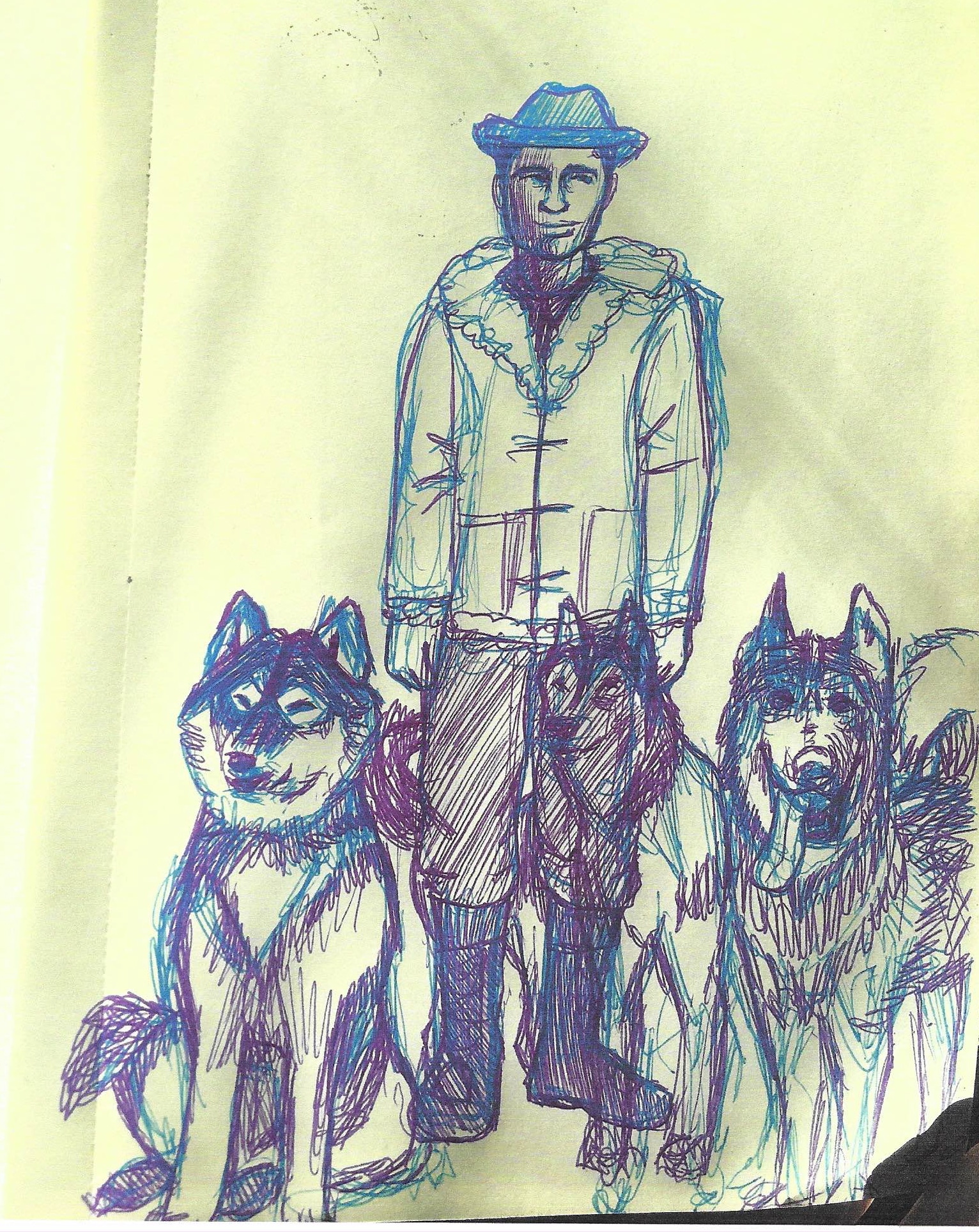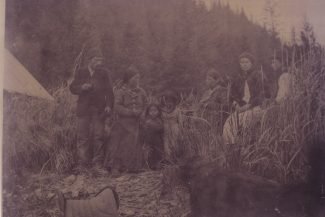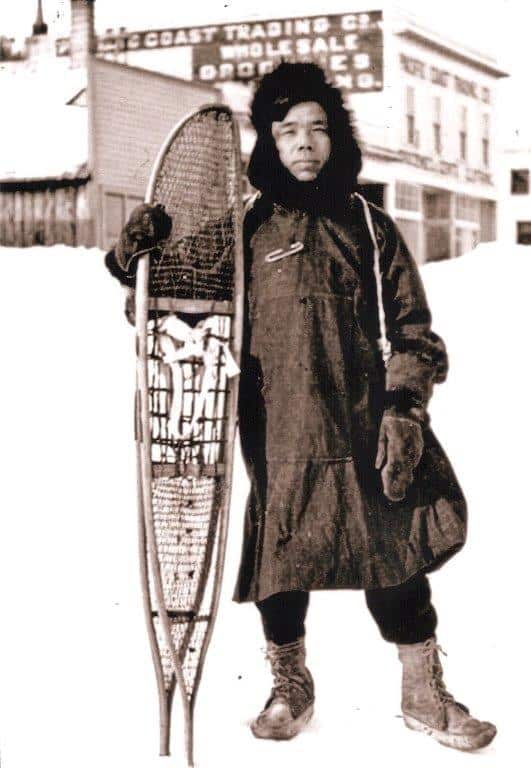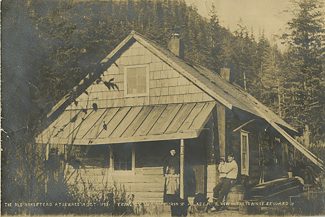
A sketch of Alfred Lowell
Alfred Lowell was born in 1876, the son of Frank and Mary Lowell, who settled on Resurrection Bay in 1884, some 19 years before the founding of Seward in 1903.

Mary Lowell’s family on the beach at Resurrection Bay. From left to right: Son William Lowell, his wife and two children, Mary, and two of her daughters, Eva and most likely, Alice. Photo courtesy Resurrection Bay Historical Society, 20.1.1.
He was an active and enterprising man. In 1901 he and his brother William established a fox farm on what is now known as Fox Island in Resurrection Bay. He located placer claims on Tonsina Creek about three miles south of Seward in 1905 and worked them over the years. He also prospected in the Susitna and Yenta River districts but never struck it rich. Starting in the winter of 1905 he ran mail by dog team from Seward to Tyonok, via Knik and Susitna Station. He became famous for the fast times of his runs.
Iditarod Trail Beginnings…
With the discovery of gold in the Iditarod country in 1908, Seward merchants saw great commercial possibilities in Seward becoming the starting point for winter traffic to the new gold fields. The Seward Commercial Club was very responsive, when on December 3, 1909, the famous Japanese musher Jujiro Wada proposed (1) that the Club pay all his expenses for a trip from Seward to Iditarod and back and (2) the purpose of the trip would be to demonstrate to an absolute certainty that the Seward route to the Iditarod was an absolutely feasible one, thereby bringing a large number of prospectors to Seward to take the trail to Iditarod. The Club voted to accept Wada’s offer. It was estimated that the total cost for his trip would not exceed $600. The Club also hired Alfred Lowell to accompany Wada for $5 a day.
Jujiro Wada and Alfred Lowell Start Their Trek

Wada and Lowell left Seward for Iditarod on December 17, 1909. They followed the existing trail but did blaze some new sections to improve the trail. They checked out the mining activity on all the creeks in the area. On the way back to Seward they flagged the trail so others could use it. Wada and Lowell returned to Seward on February 26, 1910. They reported mining prospects in the Iditarod district were good and the trail was in general a good trail but said the Indian River Pass between Girdwood and Eagle River was dangerous because of frequent snow slides.

The Mary Lowell Homestead. Photo courtesy Resurrection Bay Historical Society, 21.1.4.
Wada and Lowell should be remembered for the significant contribution they made to the development of the Iditarod Trail. The best way to sum up their accomplishment is to say they pioneered the route of the trail from Seward to the Iditarod district. A trail used by hundreds of people and over which tons of mail, supplies and gold were carried.
An Untimely End
In October 1910 Alfred was hired as a packer and William Weaver as a hunting guide by H. B. Smith, a wealthy pharmacist from Norwich, Connecticut. On October 11 on the return from the hunt, their boat capsized on Kenai Lake and Mr. Smith and Alfred Lowell drowned.
At this time, he and his wife, Alafor were separated. She was living in St. Joe, Idaho. When notified of his death, she came north to settle his estate. She offered a $500 reward for the recovery of Alfred’s body. His brother William and John Rock found his body about 150 yards from the shore on November 10. Mrs. Lowell gave each man $250. Additionally, The Commercial Club still owed Alfred $250 for his trip to Iditarod. His wife settled for S130.
The Seward Gateway reported that Alafor took Alfred’s body back to St. Joe, Idaho for burial. For more information on where he was buried the Seward Trail Blazers contacted the Idaho Historical Society. It reported the following: although St. Joe, Idaho still exists as an unincorporated city, it does not have a cemetery. The Society checked multiple sources for any information on Alfred or Mrs. Lowell but found no record of his burial in any cemetery in Kootenai county, in which St. Joe is located. So, Alfred’s final resting place is a mystery.
